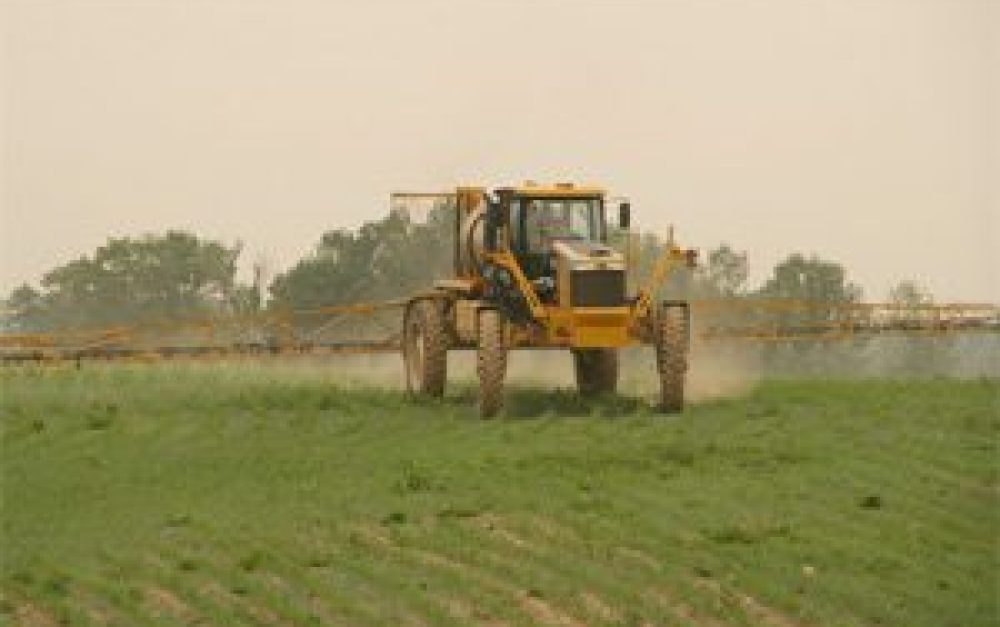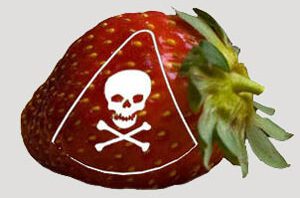It seems like a no-brainer: If you happen to live or work or go to school across the street from a field or orchard where pesticides are sprayed, you might think, "Maybe I'm breathing some of these pesticides." Especially when the wind blows from the field towards you. Especially when you can smell the pesticides. And you might also think, "Maybe this isn't good for me." Especially when the guys applying the pesticides are wearing Tyvek spacesuits. Especially if you start feeling ill.
And you'd be right to think these thoughts, even though most growers and pesticide applicators will tell you that you're crazy and have nothing to worry about. For years PAN's been working with concerned communities to show that these exposures are real and need to be taken seriously. And now a new study by scientists from the National Institute for Occupational Safety and Health and various states' Departments of Health, corroborates what we've been saying all along.
Mistakes happen, rules aren't followed & buffer zones are too small.
The study, published this week in Environmental Health Perspectives, analyzed pesticide poisoning data from 11 states from 1998 to 2006. The authors identified almost three thousand cases of illness associated with pesticides drifting from outdoor agricultural applications. This number likely underestimates the true burden of drift-induced illness, since pesticide poisonings are notoriously under-reported and misdiagnosed. In addition, the study looked only at acute illness — cancer, birth defects and developmental delays, Parkinson's disease and other chronic diseases linked to pesticide exposure weren't assessed in the study.
Nonetheless, the researchers made some interesting findings:
- Most cases were "non-occupational." Translation: Most often those sickened by drifting pesticides are not farmers or farmworkers, but are "bystanders," people who live, play, or work at non-farming jobs that just happen to be near pesticide-treated fields.
- Children bear the brunt of the "non-occupational" drift incidents, getting sick more often than any other age group.
- Fumigants — which are highly volatile, highly toxic, and have very high application rates —are responsible for more cases than any other class of pesticides.
- Californians living in the five counties with the most pesticide use are 69 times more likely to be involved in a drift incident than people in other counties.
Of course, none of this is very surprising. We've been saying for years that bystander drift exposure is a huge problem, that fumigants are particularly problematic, and that children are especially at risk. Rural residents have known this all along too — every week I get at least one phone call or email from someone dealing with drift, and each time I visit partner groups in California's Central Valley, the Great Plains, or on the Florida coast I hear yet more stories of drift.
The authors try to dissect why these drift incidents happen:
Common contributing factors identified for drift events included applicators’ carelessness near/over non-target sites (e.g., flew over a house, did not turn off a nozzle at the end of the row), unfavorable weather conditions (e.g., high wind speed, temperature inversion), and poor communication between applicators/growers and others. Improper seal of the fumigation site (e.g., tarp tear, early removal of seal) … accounted for [a large portion] of cases.
Fumigants are just plain dangerous
Finally, they note that the quarter-mile buffer zones recently introduced to protect schools and daycare centers from fumigant drift are probably too small. "We found that, of 738 fumigant-related cases with information on distance, 606 (82%) occurred > 0.25 miles from the application site, which suggests that the new buffer zone requirements, independent of other measures to increase safety, may not be sufficient to prevent drift exposure." PAN previously reached a similar conclusion based on our own fumigant air monitoring study in Sisquoc, California.
This study comes at time when activists across California are fighting to keep methyl iodide out of their backyards. State officials have made assurances that despite methyl iodide's extreme toxicity, the risks can be "managed" with modest buffer zones, rigorous operator training, and better tarps.
But as we've suspected and this study shows, mistakes happen, rules aren't followed, and buffer zones are too small.
I'd like to end this post by saying something like, "Let's hope state officials heed the lessons from this study," but California regulators already ignored their own scientists when they approved methyl iodide. So I'll say this instead: Let's hope growers and county officials heed the lessons from this study, listen to the state's top scientists, and do what the citizens of the state have been asking: Say no the methyl iodide.







